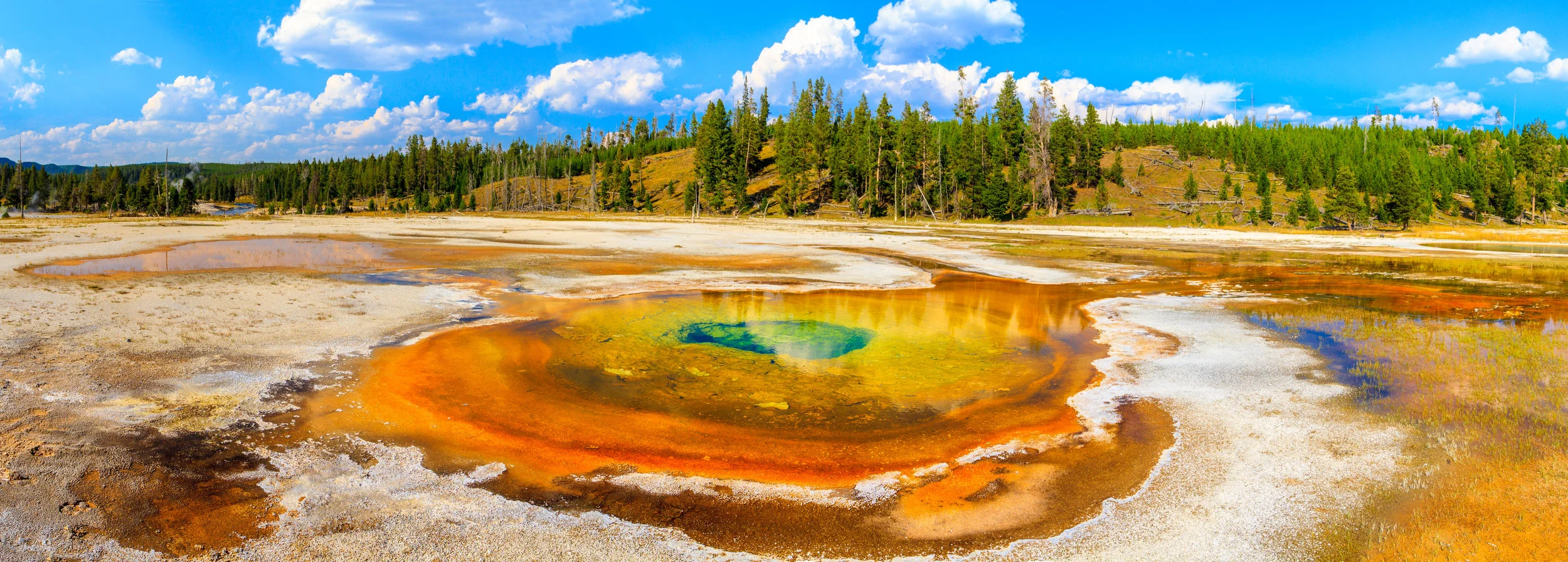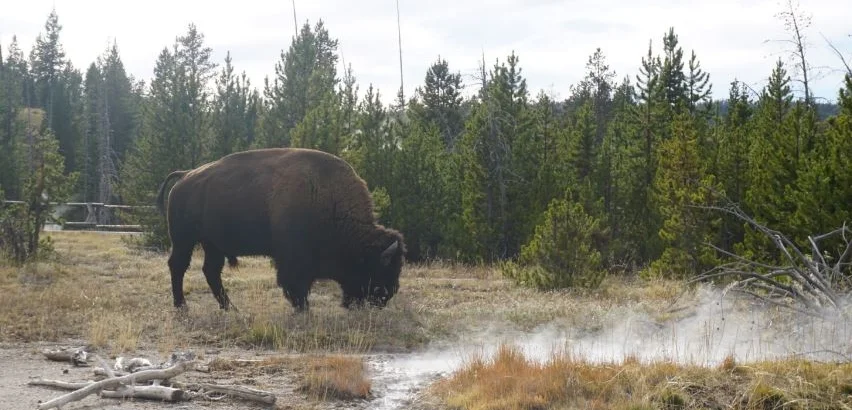TRAVEL & ADVENTURE: The Wonder of Yellowstone
by Robin Goodpaster
Before I visited Yellowstone National Park, I thought it would be nice--but touristy—with thousands of people milling around Old Faithful, cameras slung around their necks, iPhones recording every moment.
I am so glad I was wrong.
We visited in October, when summer crowds have gone and the winter snow has yet to close the roads and bring in the ski enthusiasts. Fall colors were vibrant--Aspen trees shimmered with yellowing leaves. A few snowflakes fluttered beneath an overcast sky.
Our first day, we took the Aerial Tram in Teton Village --12 minutes and 4,139 vertical feet to the summit of Rendezvous Mountain – 10,450 feet above sea level. On the way up, the sun slatted through the trees on the mountain for a dream-induced view.
By the time we reached the top, snow fell steadily. Tourists ran up and down a hill, laughing and kicking up the new snowfall. We took in the view and basked for a bit in the warmth of Corbet’s Cabin – a cozy restaurant at the top of the mountain.
Every day that I spent in Wyoming brought a new wonder. The thermal features, which number more than 10,000, were amazing. There were geysers, bubbling mud pools, beautiful hot springs in vibrant blues, greens and yellows. There were moose, pronghorn and elk grazing in enormous fields.
Big Bison
One of the most amazing things to see in Yellowstone National Park are the herds of bison – giant beasts with fluffy brown afros on their head. The first day we visited the park, I watched a bison grazing near a fumarole (an opening in the ground from which steam and gas escape) with a growing sense of dread. I wondered—would he fall through the thin crust into the boiling water below? These animals are enormous and can weigh up to 2,000 pounds. Was the grass he was eating poisoned by the bacteria that fuel the thermal pools? So many things could go wrong. But he continued to graze peacefully for as long as I watched him.
I asked our wildlife guide about the dangers of bison grazing near thermal features. “It’s funny you should ask,” he said. The bison that live in this area live, on average, 5 years less than other bison in the park, because of the fluoride in the grass.” When they die, he said, the living form a circle around the dead to mourn. Sometimes they linger for days, and rangers close the trail to let the animals grieve.
I saw other animals in Yellowstone—elk, chipmunks, magpies and enormous ravens. None were as majestic and inspiring as the bison.
Yellowstone is the only place in the lower 48 states where bison have lived continuously since prehistoric times. They make up the nation’s largest bison population on public land. They roam relatively freely around 2.2 million acres of Yellowstone National Park – only 1% of which is visible from the roads that traverse this immense wilderness.
The bison in Yellowstone are plentiful (estimated from 4,000-5,000), but the species was on the brink of extinction from hunting just over a century ago—as few as two dozen remained in 1902. Hunters slaughtered bison across the Great Plains by the thousands, slicing the population from 30 million to just over 1,000 by 1890.
Scientists estimate that there were more than 30 million bison in North America when the first European settlers arrived, ranging from northern Canada to Mexico, from Washington to New York. Explorers Lewis and Clark described western herds “so numerous that they darkened the whole plains.” The U.S .Army, which administered Yellowstone at the beginning of the 20th century, protected bison from further poaching. Today, about 500,000 live across North America. The population is steady, but the animal’s status is near threatened.
Yellowstone is an amazing place to view wildlife. Besides bison, you can see bald eagles along with elk, moose, badgers, otters, grizzly bears, and 60 other species of mammals who roam freely around the park.
Speaking of Bears….
Here’s something I never thought I would see: a giant grizzly bear grazing near the highway. Fall is the time of year bears will eat just about anything they can find to fatten up for the winter.
Our wildlife guide told us about Grizzly Bear 399, a female who has raised 12 generations of cubs near the highway.Why? Because the male bears won’t go near the human-infested areas. And male bears would almost certainly kill her cubs to force her into estrus. Bear 399 is now 21 years old (ancient in bear years) and was sighted with two cubs in 2017. She’s given birth to three sets of triplets, one set of fraternal twins, and two single cubs. Her daughter has also raised four cubs of her own.
But as many as half of 399’s descendants have been killed in different kinds of conflicts with people. Few live long enough to die of old age. Overall, 85 percent of grizzly deaths in the Greater Yellowstone area are related to humans.
Every bear is crucial for a species listed as threatened on the Endangered Species Act. Today, it’s estimated that there are around 600-1000 grizzlies in the Greater Yellowstone Ecosystem (Yellowstone and Grand Teton National Parks).
The climate here is harsh—vegetation is sparse in the desert that surrounds the park, and snowfall is well above average, 79 inches per year. Surviving a Yellowstone winter is tough.
As I left the park, I made myself a promise to return to Yellowstone. There’s still a lot to discover.
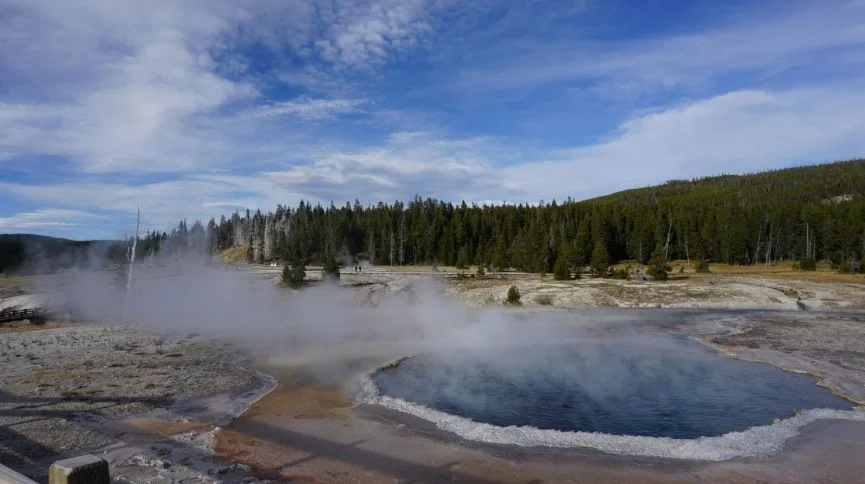
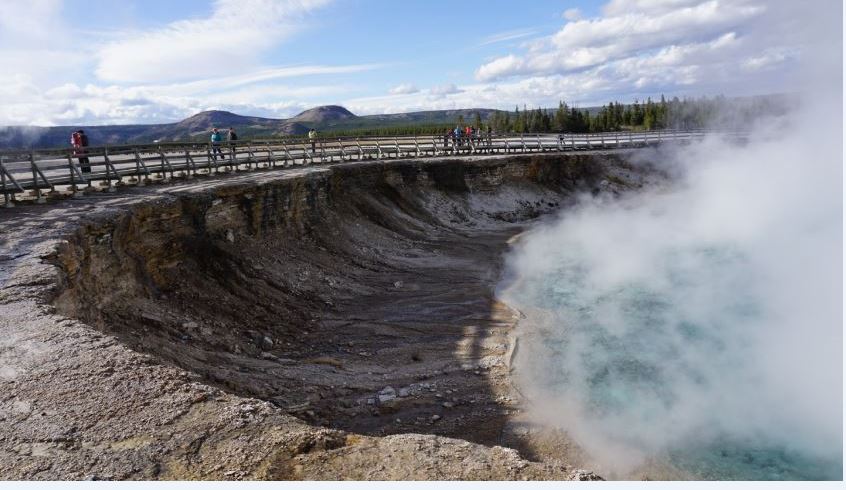
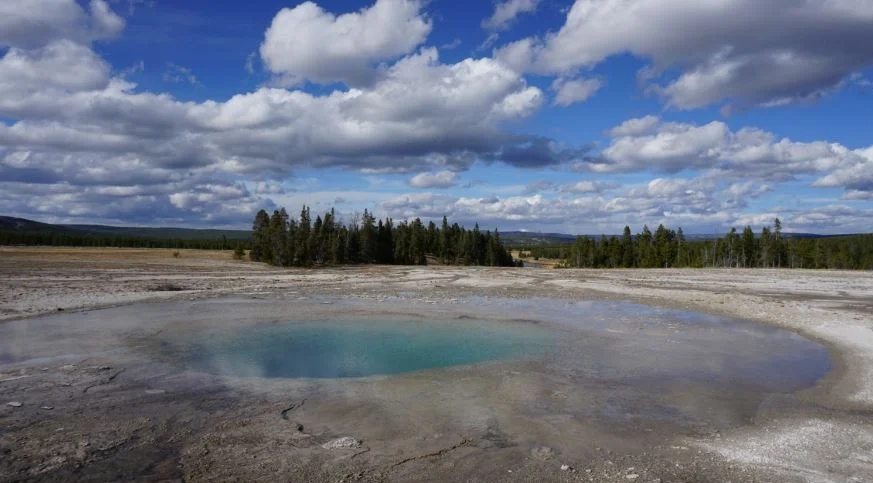
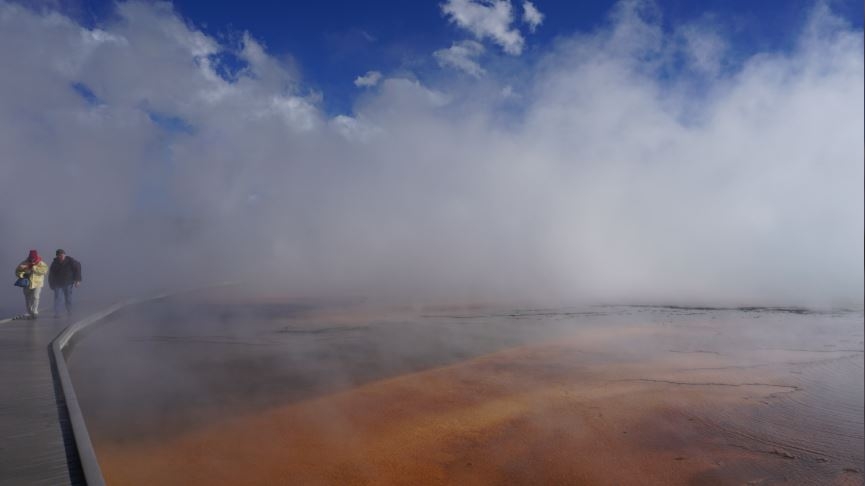
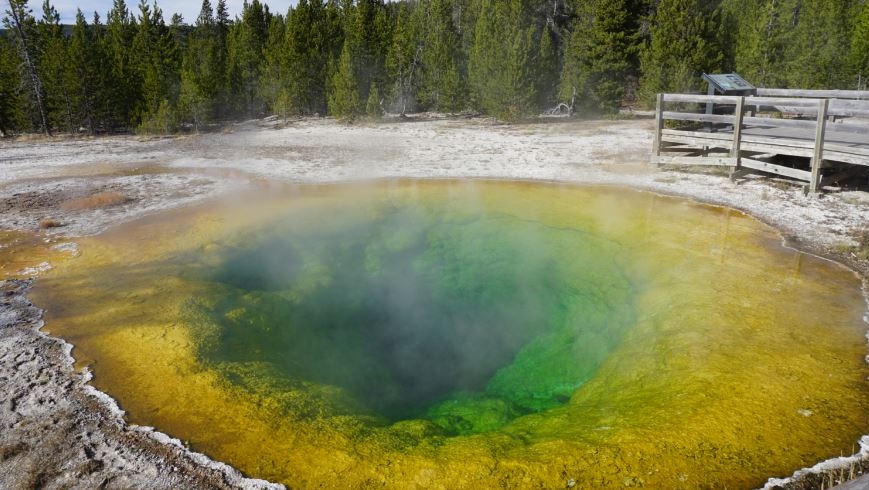
Sources:
NPS.gov, National Geographic.com, Smithsonian.com, Defenders.org, sciencing.com

